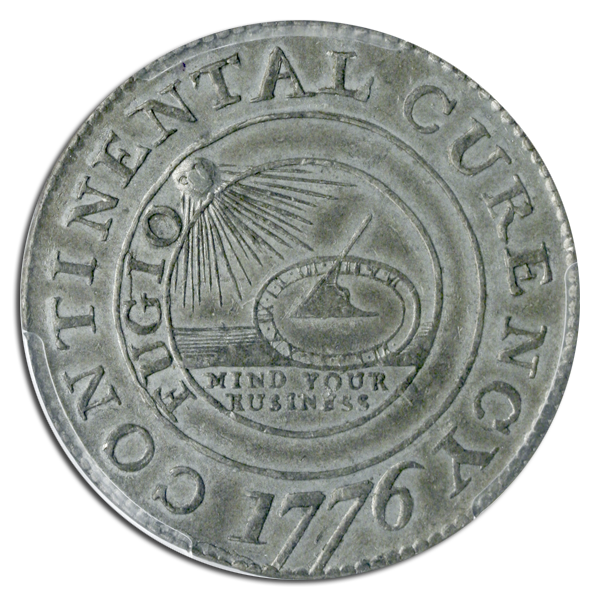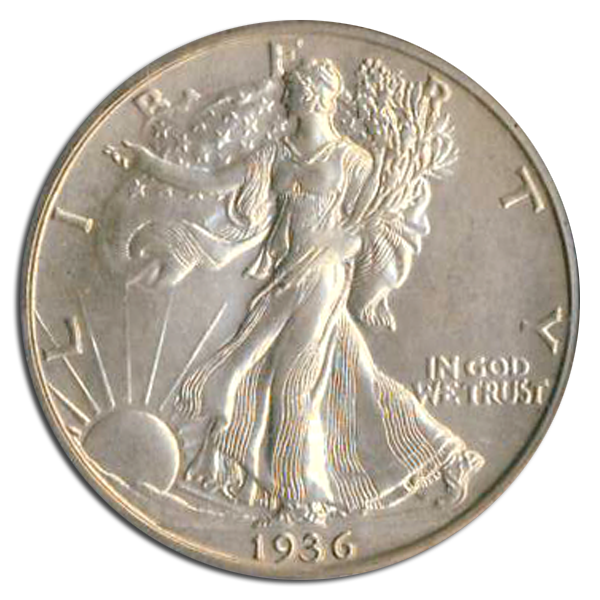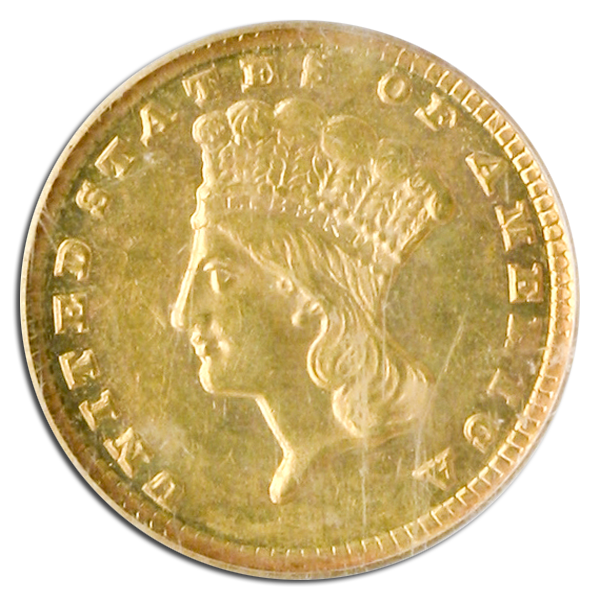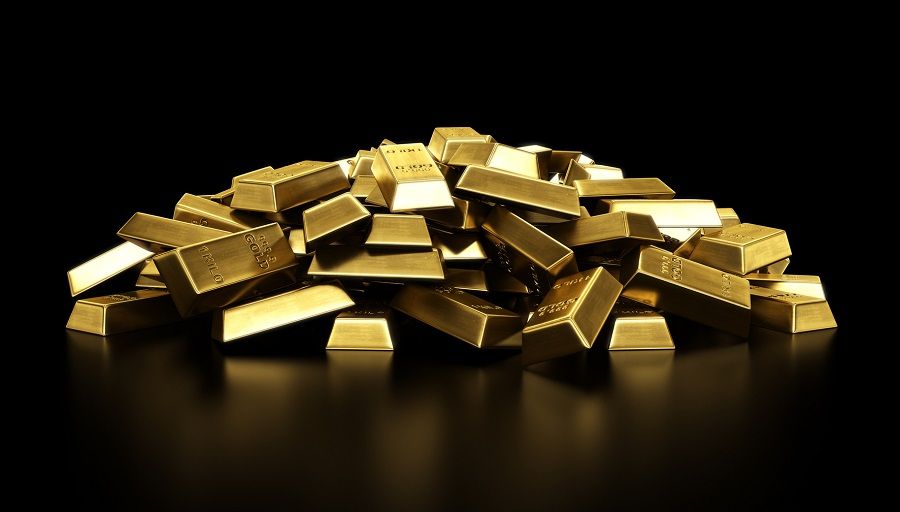The Origins of the 1776 Continental Dollar Coin
Posted on — 7 CommentsThe 1776 Continental dollar coin represents, perhaps more than any other piece of US currency, the state of upheaval within the nation’s colonies in 1776.
Consider, for example, that there is no known documentation authorizing the issuance or approval of this coin. Moreover, the word currency is misspelled on the obverse of one of the varieties of the coin suggesting that the design and minting was rushed. Under the circumstances, these errors are not surprising. After all, this was the first pattern coin struck for the United States.
After the American Revolutionary War began the US started releasing their own currency. Officials estimate that only 6,000 of these pieces were minted with the production likely occurring in New York. They were made from pewter, and experts estimate that only 100 of these rare coins remain today. The scarcity of the coin is not only due to its age. Many believe that this currency was melted and used as another resource in the war effort.
These characteristics make the 1776 Continental dollar coin especially collectible. Additionally, many collectors appreciate the piece’s close association with Benjamin Franklin who designed both sides. One side shows sun rays shining on a sundial with the Latin “Fugio” which translates to “I flee.” Next to this are the words, “Mind your business” making the complete message “time flies, so mind your business.”
The reverse shows thirteen chain links representing the thirteen original colonies. Their depiction as a chain is meant to encourage solidarity among the nation’s citizens. Imagery like this perfectly captures the mood underpinning the formative years of the country. It was a time when each citizen had to contribute and nothing was accomplished without hard work. In fact, even the coin itself was hand-punched. As a result, no two dies were the same.
The roughness of the colonial coin’s minting can be best explained by the secrecy in which they were produced. In 1776, any efforts by the colonies to mint a new coin would have been seen by the British as an attempt to counterfeit currency. Despite this secrecy, one variety includes the legend “EG FECIT” which is Latin for “EG made this.” Here, EG stands for Elisha Gallaudet who engraved the plates for the coin. There are seven die combinations comprised of four obverse dies, and two reverse dies. The misspelling occurs among these as either the word “curency,” or “currencey.”
Today, the 1776 Continental dollar coin remains one of the most sought after pieces among US collectors. Some varieties are especially rare because they were struck in brass and silver rather than pewter. Numismatists estimate that approximately fifteen brass versions, and four silver versions still exist today.
Want to read more about historic coins, market news and Tales from the Vault? Sign up for our newsletter and you’ll get our favorite stories from around the world and the latest tangible assets news delivered to your inbox weekly.
Can Gold Investing be Part of an “ESG” Investment Strategy?
Posted on — Leave a commentIn recent years “ESG” funds have become a popular choice for investors.
These three letters stand for environmental, social, and governance. ESG funds are designed to include stocks of companies that satisfy strict standards with regard to these three categories. For example, companies deemed worthy of the ESG label commit to these sustainability factors in three ways:
Environmental:
The company ensures that their business minimizes waste. Some companies go further by building their operations around renewable energy. The key focus within this category is to minimize the business’s impact on the environment via energy efficiency and use of eco-friendly materials. Additionally, an environmental focus includes parameters for the treatment of animals.
Social:
The company adheres to a set of standards relating to social issues like equal pay, gender equality, and healthy working conditions. To meet these social standards the company must also provide and maintain a safe and healthy working condition for employees. Many companies within the ESG sphere also exercise social responsibility by making charitable donations.
Governance:
The governance factor relates to the company’s internal controls. In other words, the business must ensure there are no conflicts of interest among the stakeholders. The company must also act in the best interest of the shareholders by monitoring the decisions of the management. A sustainable, and responsible governance policy also means that the business avoids engaging in any political contributions aimed at gaining favorable treatment from regulators.
ESG investments have become popular as investors seek to balance the two goals of asset growth and long-term sustainability.
The ethos underpinning the three areas of environmental, social, and governance has been particularly attractive to a new, younger demographic entering the investing world. Moreover, these funds have, on average, delivered favorable returns.
This combination of performance and responsibility has elevated ESG funds to the public consciousness. Consider research from the Global Sustainable Investment Alliance which shows that sustainable investing assets have increased by 38% over the last four years.
Additional research from Morgan Stanley shows that 8 in 10 Millennials are interested in the ESG investing strategy. This groundswell of interest is noteworthy because this same demographic is projected to hold approximately $19 trillion in assets within the year.
However, can someone who is committed to ESG investing strategy include gold in their portfolio?
Some gold mining operations indicate that the answer might be yes.
Consider Angkor Resources Corp located in Cambodia. The leadership within the company has initiated a corporate social responsibility program. The company takes an active role in helping the community grow crops, renovate local schools, and some education programs. Though small, the company is becoming an example to others in the industry.
Other mining operations like Anglo-American are stepping up. The company is using reverse-osmosis technology to convert waste water into drinkable water for local communities surrounding Johannesburg.
Others, like Iamgold Mining has installed solar-powered wells around their Essakane mines in north-eastern Burkina Faso, West Africa. According to Barron’s, “the infrastructure has boosted incomes while reducing informal gold panning.” Moreover, Barron’s reports that Iamgold “has spent four times more on local goods and services than the Canadian International Development Agency provided the Sahel nation for its entire 2011-12 fiscal year.”
Broad-based support for ESG strategies among gold miners still has a lot of room to grow. However, small and large firms like Angkor Resources, Anglo-American and Iamgold show that gold can coexist with an ESG investment plan.
Want to read more about historic coins, market news and Tales from the Vault? Sign up for our newsletter and you’ll get our favorite stories from around the world and the latest tangible assets news delivered to your inbox weekly.
Gold Begins New Historic Bull Market
Posted on — Leave a commentGold soared in the first two trading weeks of 2020. Fresh investor demand fueled a sharp run-up following a U.S. military strike against a top Iranian general. Gold is now trading at new seven-year highs.
The military action is serious and one of the drivers for gold’s strength. But, geopolitics are only one of many factors that support the new secular bull market already underway in gold.
Gold is in the early stages of a historic new bull market. Looking back, history shows two major bull markets. The first from 1971-1980. The second from 1999-2001. The monthly gold chart reveals a third new bull market is already underway.
During the 1991-2001 bull market, gold rose 657%. Using history as a guide with conservative estimates that opens the door to a run toward $5,000 an ounce over this decade.
There are four major drivers in this new bull market in gold:
- Impotence of fiscal and monetary policy
- Currency debasement
- Geopolitical tensions
- Supply and demand
Impotent Policy Tools Leave US Vulnerable
Governments and central banks chipped away at their future policy effectiveness since the 2008 Global Financial Crisis. Monetary policy experiments with negative interest rates, quantitative easing and long-term low interest rates leave the U.S. Federal Reserve and other global central banks impotent to counter-act future financial crises and economic downturns.
Currency Debasement Continues
The record-size $22 trillion American government debt ties the hands of future Administrations to stimulate economic growth when it will be most needed. These policies continue to debase and devalue the paper currency you hold in your equity and bond investment accounts. Gold will continue to climb higher as these policies continue to erode the value of fiat currencies.
Searching for a New World Order
Geopolitical tensions are growing around the globe as the old world order rapidly destabilizes. The East is rising up. China and the United States are already at war over trade. The financial system is vulnerable to dramatic upheaval in the years ahead as the world’s two largest economies will battle for dominance on many fronts. The United States has the disadvantageous of being a debtor nation. China holds many cards with its trillions in reserve.
The U.S. dollar will fall from its pedestal as the world’s reserve currency at some point in our future, which will drive interest rates and inflation easily into the double digits and support another advance in gold.
Demand Will Outpace Supply
Peak gold supply is well known and demand is rising. Central banks were voracious buyers of physical bullion in recent years along with diversification from high-net worth individuals. Over the past 12 months nearly 80% of the world’s global gold purchases were made by high income investors, according to the World Gold Council.
Wealthy Turning to Gold
It’s no secret that Silicon Valley billionaires and New York Hedge Fund managers are stocking up on gold coins. This has been widely documented by numerous mainstream articles including New York Magazine.
Market guru Dennis Gartman said last month he now recommends investors hold 30% of their assets in gold over the next decade.
If billionaires and millionaires are hedging their wealth with gold bullion, shouldn’t you diversify at least 10%-15% of your assets?
The decade ahead may be like no other humans have ever experienced. Rapid acceleration of technology alongside a destabilizing world order will expose a truth known for thousands of years. Gold preserves wealth.
Want to read more about historic coins, market news and Tales from the Vault? Sign up for our newsletter and you’ll get our favorite stories from around the world and the latest tangible assets news delivered to your inbox weekly.
It’s No Secret Americans Didn’t Like This Coin’s Predecessor
Posted on — 1 CommentThe Walking Liberty Silver Half Dollars were minted from 1916 through 1947 with broad public and artistic acclaim and are widely considered to be one of America’s most beautiful coins. It was no secret the public disliked its predecessor: the Barber half dollar.
In April 1915, Robert Woolley took over as U.S. Mint Director and one of his first acts was to request new designs for silver coinage including a new silver half dollar.
Acclaimed German born American sculptor Adolph Weinman was chosen to design the new silver half dollar which resulted in immense artistic progress in our country’s coinage.
Noted art historian Cornelius Vermeule praised the Walking Liberty half dollar writing the coin “really treat[s] the obverse and reverse as a surface sculptural ensemble. The ‘Walking Liberty’ design particularly gives the true feeling of breath and sculptural services on the scale of a coin.”
Minted in 90% pure silver with a distinctive reeded edge, these elegant Art Nouveau-style coins are packed with symbolism and their beauty resonated with Americans during different economic times.
Weinman created a dramatic portrayal of a mythical figure of Liberty shown walking on the obverse. She is featured in a full gown with an American Flag draped across her shoulders. She holds a bouquet of olive branches in one hand, while the other is outstretched ahead. The sun is rising in the lower left with the inscriptions: “LIBERTY,” “IN GOD WE TRUST” and the year of minting. The reverse features a stunning bald eagle rising from a mountaintop perch.
These beloved Walking Liberty Silver Half Dollars were minted until 1947. In 1948, Walking Liberty Half Dollars were replaced by the Benjamin Franklin Half Dollar.
The Walking Liberty Half Dollar series is considered challenging to collect by date and mintmark due, in large part, to limited survivorship for coins struck between 1916 and 1933.
Many collectors aim for what is known in numismatic circles as a ‘short set’ which can be completed with issues struck from 1934 onward. If you’d like to start a collection or add to yours, we have just one of these beauties minted in 1936.
In 1936, the Depression lingered on in America. Jesse Owens won his fourth Olympic gold medal and the Boulder Dam was completed and later renamed the Hoover Dam. In that year, the U.S. mint struck over 12 million Walking Liberty silver half dollars. Only 10,000 survived in PR65 grade levels or better.
Holding one in your hand opens the door to yesteryear. Just imagine how many people carried this coin in their pockets over the past 84 years. Imagine the stories this coin could tell if it could talk. Imagine passing down this coin to your sons or daughters and the meaning that will carry on in their lives forever.
Want to read more about historic coins, market news and Tales from the Vault? Sign up for our newsletter and you’ll get our favorite stories from around the world and the latest tangible assets news delivered to your inbox weekly.
4 Reasons to Add Rare Coins to Your Portfolio in 2020
Posted on — Leave a commentIf you are reading this blog, you either want to learn more about tangible assets investing or you already own bullion and maybe even rare coins. No matter what your experience level, you have come to the right place.
Blanchard has been helping individuals protect and grow their wealth through tangible assets investing since 1975. Blanchard is the trusted tangible assets investment firm for over 450,000 clients.
Many of our clients come to us with an interest in diversifying their portfolio with physical gold bullion. That is a proven diversification strategy and allows you to continue increasing your wealth even during recessions and bear markets in stocks.
What isn’t as widely known is that rare coins offer an even stronger value proposition when it comes to long-term returns even over gold.
Here are 4 reasons you should add or increase your exposure to rare coins in 2020.
Higher Returns. The return on rare coins is higher than other assets and twice that of gold, according to an independent study by Raymond E. Lombra, Ph.D., entitled The Investment Performance of U.S. Rare Coins.
Portfolio Diversification. Don’t put all your eggs in one basket. Portfolio diversification is the golden rule of investing. Buying numismatics is additional diversification away from paper assets like bonds and stocks and offers an additional layer of diversification on top of gold bullion.
Aging Stock Bull Market. The current bull market is the longest one on record. Age alone doesn’t suggest the market will tank tomorrow. But, it does leave your equity investments vulnerable. The Federal Reserve has propped up the stock market with its ultra-low interest rates since the 2008 Global Financial Crisis. All cycles must come to an end. When the stock market turns, it will be like a pin popping a balloon. The air will come out fast.
When that happens, it will be too late to buy gold bullion and rare coins at a relative bargain price. Tangible assets will shoot higher fast. Buying now can allow you to take advantage of the most advantageous prices we have seen in years.
Rare Coins are Liquid (Easy to Sell). In today’s world of ‘click and buy online’ consumers are used to speed. The demand for rare coins is extremely high, which makes them easy to sell if you need to. The $20 Saint-Gaudens gold coins, which were minted between 1907 and 1932, are an example of one of the favorite choices among numismatic investors, which boast high liquidity levels.
In 2019, we saw uncirculated Saint-Gaudens coins trade at an extremely narrow premium to gold bullion, as low as 8-10%. Historically, these coins typically trade at a 30-40% premium over gold bullion. Once the stock market cycle turns, this sets up the Saint-Gaudens for a massive price appreciation.
We recommend adding exposure to U.S. rare coins at the MS65 level or better. Always purchase the best coin in its category that you can afford to maximize your long-term return.
If you do own gold bullion, consider converting some of your gold into new rare coin holdings. Rare coins are poised to outperform in the new gold bull market cycle that is just beginning now.
Many on Wall Street are forecasting gold gains to the $1,600, $1,800 and even the $2,000 an ounce level in the months and years ahead. If history shows that U.S. rare coins gain twice as much as gold, investments in numismatics could easily double in 2020 and 2021 from current levels.
Want to get started or just learn more? Call Blanchard today at 1-800-880-4653 for a private and personalized portfolio consultation.
We proudly offer coins handpicked by John Albanese, who is the top numismatist and coin grader working in the rare coin market today. John has more than 35 years of experience in numismatics, and he holds the unique distinction of creating both of America’s leading independent coin-grading services. He co-founded Professional Coin Grading Service (PCGS) before launching Numismatic Guaranty Corporation (NGC), where he personally graded more than one million coins.
Gold and the Looming Retirement Crisis
Posted on — Leave a commentAuthor Zora Neale Hurston once wrote, “Ships at a distance have every man’s wish on board. For some they come in with the tide. For others they sail forever on the horizon, never out of sight, never landing.” This sentiment touches on the economic reality of most American’s today.
Wages have stagnated for more than three decades. Moreover, data from the Brookings Institute shows that 44% of Americans of working age (18-64) generate a median annual earnings of less than $20,000. While these numbers present a sobering picture for the present, the downstream effects are even more grim according to the Economic Policy Institute (EPI).
In their wide-ranging analysis, the experts at the EPI have determined that the share of families with retirement savings has declined since the Great Recession. All their data points to the same conclusion: a retirement savings shortfall is a threat to most Americans. In fact, their most alarming finding is that “most families—even those approaching retirement—have little or no retirement savings.” Pension plans have largely become a relic of the past, and meaningful 401K retirement plan participation remains weak. Many American’s simply have not fully recovered from the fallout from the 2008-2009 financial crash.
The final statistic from the EPI report gives dimension to just how dangerous the looming retirement crisis has become. The analysts write “retirement inequality is greater than income inequality even in peak earning years.” Those familiar with the intensifying state of income inequality will understand just how worrisome this conclusion is.
As American’s face these challenges can they find any solutions with an investment in gold? They answer may be yes.
Gold is a unique component of a retirement portfolio because it addresses three key challenges at once.
First, gold offers the possibility for capital appreciation that is not bounded by the rise and fall of the equities market. In other words, gold commonly moves in isolation to stocks and bonds. This relationship means that gold can be thought of as a counterbalance to the whims of the market. This fact is important given that a severe market downturn, like that seen during the Great Recession, can decimate a retirement portfolio. Even those who are older, but not nearing retirement, face heavy risks given that they often tap into retirement funds amid a job loss.
Second, gold is free from the counter-party risk present in stocks and bonds. Counter party risk is the danger that another party involved in your investment will fail to act in your best interest. When you engage in a contract with another group (“party”) you always face the risk of the other side failing to meet their obligations. Stocks, bonds, derivatives and options all carry this risk because there is always a chance that the other side will default. In such a scenario a company may file for bankruptcy. Gold is not subject to counter-party risk because there is no CEO, CFO, or board of directors to act inappropriately.
Third, gold is disconnected from the structural problems underpinning the retirement savings crisis. American’s do not have retirement savings because their wages have stagnated while the cost of living has increased annually. This imbalance has forced more Americans to borrow to survive. The loans are accumulating, but the repayments are slowing, or even stopping. This trend will likely bring about further destabilization to the economy risking losses across many asset classes. In a period like this gold often performs well as a safe haven.
Savvy investors are making moves today for the realities of tomorrow.
Get our tales from the vault, our favorite stories from around the world and the latest tangible assets news delivered to your inbox weekly. Sign up here.
The Growing Importance of Gold in the World Financial System
Posted on — 1 CommentSince ancient times, gold has been an important medium of exchange, store of value and wealth building asset. In today’s modern world, it is gaining even more importance.
Central banks around the globe continue to gobble up physical gold bullion for their vaults. Recently, the Dutch central bank publicly stated that they see gold as the key to rebuilding after a financial system collapse.
How much gold have central banks been buying? Though the end of October (the most recent data available), central banks purchased almost 562 tonnes of gold, which brings total reported global gold reserves at 34,500.8 tonnes. The current amount of physical gold holdings in central bank vaults around the globe is now only 10% off the all-time high at 38,491.2 tonnes, which was seen back in 1966.
Over 50 years later from the all-time high, central banks are refocusing on building gold reserves. In October, Russia and Turkey were the largest buyers of gold, with Serbia, Uzbekistan, United Arab Emirates and Mongolia also sizeable buyers.
Official published data shows the United States as the world’s largest gold holder in December with 8,133.5 tonnes of gold. Germany is in second place at 3,366.5 tonnes with the IMF, Italy, France and Russia rounding out the top six.
China is officially the world’s seventh largest gold owner with official reserves at 1,948.3 tonnes. However, there remains rampant speculation that China could own significantly more. It is commonly known among economists that even general economic data out of China is massaged by government officials and not always accurate.
How much gold should you own?
Dennis Gartman, former editor and publisher of the Gartman Letter, said in December he recommends investors hold 30% of their assets in gold over the next decade. He called the biggest threats ahead the rising levels of populism and trade protectionism and the rising possibilities of real war between the U.S. and China.
Diversification into tangible assets like physical gold is a proven and effective portfolio diversifier. Investing in gold is something tangible that you can hold and touch. It is also a private investment. Many trust attorneys and retirement planning professionals recommend bullion as an efficient and discreet method of transferring wealth to the next generation.
Wall Street firms are forecasting gains of a minimum 10% in 2020 in gold, with some even pointing higher. BofA Global Research recommends buying gold on dips. “In 2019 gold confirmed a six year base and start of a multi-year uptrend to a new all-time high. In 2020 we favor buying the dip for a rally to 1586, 1690 and 1750,” a December BofA Global Research report said.
As central banks increase their diversification to gold in preparation for what lies ahead, it is worth thinking about your assets. Do you own enough gold to rebuild after a financial collapse, like the Dutch central bank has discussed? Don’t delay. Prices are expected to climb even higher in 2020.
What is Diversification 2.0?
Posted on — Leave a commentDiversification is the first rule for any long-term investor. The idea is simple: spread your money across several investments. If one fails, the others will be there to pick up the slack. Diversification makes sense in any market. It is the time-tested strategy that is as fundamental to investing as gravity is to the world of physics. However, something seems to be changing.
Diversification is disappearing, but why?
In a global economy more assets are correlated. As more countries and businesses become reliant on one another more assets are moving in lockstep with one another.
Consider research which uncovered “a rise of cross-asset correlation between select asset classes.” The research reflects “an average correlation increase of 33% between the test periods 1990-2000 and 2006-2016.” This heightened correlation is a problem because, “a significant market event or correction can be compounded by a period of highly correlated assets across integrated financial markets.”
A significant market event is looking more possible than ever given the heightened level of the inflation-adjusted price-to-earnings ratio (CAPE ratio). Today, this figure is higher than it has been at almost every point since 1880. An elevated CAPE suggests that stocks are overvalued. Previously, a high CAPE has preceded market crashes. This risk appears worrying in a highly correlated market.
This new characteristic of investing in today’s markets has led some to question ideas about traditional portfolio construction. It seems that simply diversifying across different companies is not enough. Effective investors must diversify across asset classes. The new question, however, is “how much do I allocate towards other assets, like gold, to ensure a balanced approach?”
Here, research offers some answers. Data from State Street in cooperation with the World Gold Council has determined that “gold has had low or negative correlation with major equity indices since 2000.” Additionally, their research shows that gold also has a low, or negative correlation to major bond indices.
The data also shows that gold has delivered positive returns during nine of eleven “black swan” events such as “Black Monday,” the 2008 financial crisis, the subprime meltdown, and the flash crash of 2010. Gold has also delivered positive returns in periods of both low, and high inflation, though does best during periods of high inflation.
Their work is a clear indicator that gold plays a crucial role in the formation of any portfolio that is designed to withstand the inevitable rise and fall of equity, and fixed income markets.
So, what is the right portion of gold to hold in a portfolio?
The same body of research suggests that holding anywhere from 2%, 5%, or 10% can improve the Sharpe ratio of the portfolio. The Sharpe ratio is a measurement that enables investors to gauge the risk/return balance of a given investment. Therefore, by holding more gold, investors can improve the risk profile of their total investment strategy.
True diversification today means something different than it did in the past. Investors need to cast a wider net to safeguard themselves against an increasingly correlated market.
Want to learn more? Subscribe to our newsletter and get our tales from the vault, our favorite stories from around the world and the latest tangible assets news delivered to your inbox weekly.
The Valuable Nuestra Señora de Atocha Shipwreck
Posted on — 1 CommentThe Nuestra Señora de Atocha shipwreck was one of the most valuable in history. The Spanish galleon was owned by King Philip IV before sinking into the ocean in 1622 during a hurricane. It carried an armament of 20 heavy guns. The cargo was so vast that it took two months to load the gold, silver, copper, tobacco, and gems being transported. As a result, the sinking meant an enormous loss of wealth.
Even worse was the loss of life. Of the original 265 crew members, only five survived. Three of those were sailors and two were slaves. When it sank, the Atocha was just 86 miles from Havana. The valuable cargo demanded a salvage operation begin immediately. The Spanish authorities sent five ships to begin recovery efforts. However, those attempts were met with almost immediate failure.
One of the five ships ran aground. In time, they did find another ship (the Santa Margarita) that went down with the Nuestra Señora de Atocha. At a depth of approximately 56 feet, the divers had enormous difficulty retrieving the cargo. To further complicate the recovery, another hurricane hit in the month following the sinking which made any hope of a successful salvage operation remote. Over time the recovery mission dragged on.
After several years of work, the Spanish were able to reclaim about half of the contents from the Santa Margarita. Officials used the extremely dangerous method of a lowering slaves underwater in a diving bell. This solution uses a principle similar to submerging an empty cup, upside down, into the water which leaves an air bubble inside. It was within this limited space that the slave could breathe while looking through a window in the side of the bell in search of Atocha treasure. These haphazard efforts were both immoral and, ultimately, ineffective because the Spanish government was forced to borrow funds to support their efforts in the Thirty Years’ War.
Meanwhile, they never reached the site of the Atocha shipwreck. Then, in 1969, a group of American treasure hunters took up an expedition that would rewrite history.
For sixteen years they combed the ocean floor. Finally, in July of 1985 they found the Nuestra Señora de Atocha. The Nuestra Señora de Atocha treasure consisted of mostly gold and silver coins minted between 1598 and 1621. The find was so valuable that the state of Florida took legal action to claim what they believed was, in part, their property. The state demanded 25% of the find.
The legal battle lasted eight years before reaching the U.S. Supreme Court. There, judges ruled in favor of the treasure hunters. The total find was estimated to be worth $400-$450 million, consisting of approximately 40 tons of gold and silver and 70 lbs of emeralds.
Gold as an Investment in 2020
Posted on — Leave a commentInvestors are starting to think about the start of a new decade. They have reason to question the future. Consider a recent move by Bridgewater Associates, the world’s largest hedge fund. The company has placed a $1 billion bet that markets around the world will decline by March of 2020.
The bet comes at a time of unprecedented prosperity in the S&P 500 which reached 23 highs so far this year. Many, like the leadership at Bridgewater Associates, are questioning if the market can continue its bull run which is already the longest on record. Today, diversification seems as important as ever. For many, investments in gold can serve as an attractive alternative to the uncertainty behind traditional equity and bond holdings.
New research from the World Gold Council provides a far reaching view of what 18,000 survey participants believe about gold. Those included come from India, China, the US, Germany, Canada and Russia.
More than half of those surveyed in the US, India, Germany, and China trust gold more than other currencies, and 67% of all survey participants agreed that “gold is a good safeguard against inflation/currency fluctuations.”
The researchers also looked at what drives demand for gold. They learned that there are three key factors underpinning the retail investor’s decision to buy gold. The study shows that 44% bought gold to manage risk via diversification or simply by shifting money away from more volatile investments to gold, which they believed to be more stable. The study also reported that 31% bought gold on the “recommendation of a financial advisor or a friend.” Finally, 29% bought gold because they believe the price to be low, or experiencing an upward trend.
Those buying gold are likely to be focused on the long-term. The research shows that 64% of those who have previously invested in gold would purchase again in the future. Those who have not purchased gold are taking note of the loyalty existing gold purchasers display. Of those surveyed who have never purchased gold, 38% stated that they are open to buying in the future.
It is also interesting to note that despite the timelessness of gold and it’s longstanding place in the history of commerce, many of those who buy today are being driven by robo-advisors. These programs, driven by algorithms, provide investment recommendations after considering a host of data input by the user. The data indicates that in China 45% of retail investors use this technology to formulate their investment plans.
These robo-advisors appear to be filling a knowledge gap given that the same data shows that half of the participants said that they never hear the media mention gold. Moreover, two-thirds of retail investors stated that they lack the knowledge they believe is necessary to buy gold. Of this group 28% state “I don’t know enough about it to buy it,” and 22% state “I don’t understand what drives price.” It is clear that the value of more research into gold would help investors construct more diversified portfolios.
As 2020 nears investors have an opportunity to rebuild their portfolios to embrace the looming uncertainty in the investment market and the world at large.
Call Blanchard today at 1-800-880-4653 for a personalized portfolio review and individual diversification recommendations based on your long-term financial goals and risk tolerance levels.
Interested in reading more up to date market news? Subscribe to the Blanchard newsletter and get our tales from the vault, our favorite stories from around the world and the latest tangible assets news delivered to your inbox weekly.








